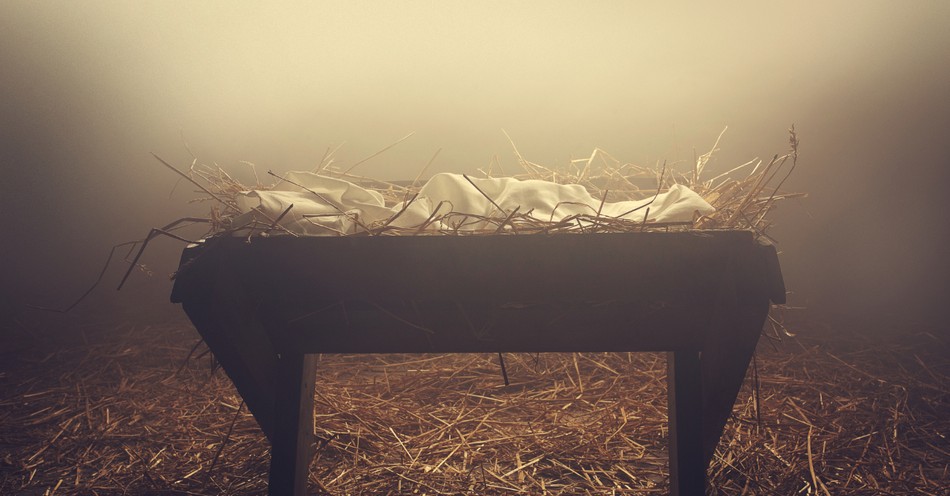“Sweet Little Jesus Boy” spun on my grandparents’ console every Christmas. I was 10 years old and didn’t know much about Jesus or what He had done, but the mingling of melody and tender lyrics touched me.
Decades later, the same Christmas carol spins on my turntable at Christmastime. As I sing along with “Sweet Little Jesus Boy,” it resonates differently than before. For years, I was spiritually blind, living in a way that didn’t reflect knowing or loving Jesus, much like those in the song. But now, as a follower of Christ, I listen with an overwhelming sense of gratitude because once I was blind. But now I see.
“Sweet Little Jesus Boy” continues to sway the soul heavenward throughout the generations.
The Story of “Sweet Little Jesus Boy”
Many assume “Sweet Little Jesus Boy” is a Southern spiritual sung by enslaved people during the nineteenth Century. However, “Sweet Little Jesus Boy” was written by African American composer Robert MacGimsey in 1934. As a child, MacGimsey gained a love and respect for black spiritual songs from his family’s hired help. According to the Union Review, his life’s work was to make African-American folk music from the South accessible by learning and preserving it.
Reader’s Digest Merry Christmas Songbook editor William Simon tells the back story for “Sweet Little Jesus Boy.” He states it was inspired on a snowy Christmas Eve as Robert MacGimsey walked past drunken crowds in the numerous bars lining the New York City streets. How could they be so blind to the true meaning of Christmas, to Jesus? MacGimsey considered the song to be an apology to Jesus.
MacGimsey, who was a white composer born in Louisiana, was heavily influenced by the spirituals and gospel music of the Black church community he grew up around. The song is written in a style reminiscent of a traditional African American spiritual, capturing the mournful tone and expressive style that characterized many spirituals of the time. Its lyrics express regret and sorrow for the way the world treated Jesus during His life, especially considering His humble birth and eventual crucifixion. The song's repetitive refrain, asking for forgiveness, serves as both a prayer and a reminder of Christ’s grace.
"Sweet Little Jesus Boy" has been performed by many artists over the years, including Mahalia Jackson, Andy Williams, and Nat King Cole, making it a beloved and enduring part of the Christmas music repertoire. The song resonates particularly with themes of humility, redemption, and the recognition of Jesus' sacrifice.
For more detailed information about the song and its background, you can refer to resources like hymnals and musical history texts focused on Christmas carols or spirituals.
Sweet Little Jesus Boy Lyrics
Sweet little Jesus boy, born in a manger
Sweet little Holy Child, we didn't know who You were
Long time ago it seems You were born
Born in a manager Lord, sweet little Jesus boy
Didn't know You'd come to save us all
To take our sins away
Our eyes were blind, we did not see
We didn't know who You were
You have shown us how
And we are trying
Master You have shown us how
Even as You were dying
This world treats You mean Lord
Treats me mean too
But that's how things are done down here
We didn't know it was You
Didn't know You'd come to save us all
To take our sins away
Our eyes were blind, we did not see
We didn't know who You were
Beautiful Biblical References
“Sweet Little Jesus Boy” begins by referring to Jesus as a babe born in a manger, pointing to Luke 2:11-12:
“For unto you is born this day in the city of David a Savior, who is Christ the Lord. And this will be a sign for you: you will find a baby wrapped in swaddling cloths and lying in a manger.”
Guest rooms were full in Bethlehem because of the census. How different it would’ve been had the innkeeper known who Jesus was and would be.
But how could they have known? Jesus wasn’t born in a palace, laid in a royal crib. Luke 2:11-12 tells how the angel of the Lord told the shepherds that a Savior, Christ the Lord, was born this day in the city of David. The sign they were to look for was the manger. An ordinary manger.
“Sweet Little Jesus Boy” also refers to our spiritual blindness, the inability to see, know, and worship Jesus as Savior and Lord.
In John 9, on a Sabbath, Jesus uses a dab of mud to heal a man who was blind from birth. The Pharisees harassed the newly sighted man about Jesus, calling Him a sinner (v.24). The blind man answered, “Whether He is a sinner, I do not know; one thing I do know, that though I was blind, now I see.” (v. 25)
As the song continues, MacGimsey describes the rejection Jesus experienced from humanity, as prophesied in Isaiah 53:3, where the prophet Isaiah says that the suffering Servant of the Lord, Jesus, would one day be despised and rejected, like one from whom people hid their faces. Throughout Jesus’ earthly ministry, rejection met Him at every turn. The Pharisees, Sadducees, Romans, disciples, followers, and His family rejected Him.
Though the world was made through Jesus, John says the world did not recognize Him, that His own did not receive Him. (John 1:10-11)
Rejection of any type is painful, but it’s challenging when experienced by friends and family who don’t understand our relationship with Jesus. But it should not catch us off guard or by surprise. Jesus warns us throughout the New Testament that if we identify with Christ, we, too, would be persecuted. John 15:19 says, “If you were of the world, the world would love you as its own; but because you are not of the world, but I chose you out of the world, therefore the world hates you.”
“Sweet Little Jesus Boy” concludes by reflecting on the cross and Christ’s message. For three years, Jesus proclaimed He was Jesus the Messiah, the Light of the World, and the Gate everyone must enter through to be saved. (John 10:7-9)
Some accepted Jesus as Lord and Savior, but many did not. On the cross, amid His suffering and pain, He asked God to forgive the persecutors because they didn’t know what they were doing. They did not know who they were crucifying.
What Lessons Can We Learn from “Sweet Little Jesus Boy”?
Despite its age, lessons from “Sweet Little Jesus Boy” remain true today. Some include:
1. Its backstory reminds us of the sobering truth that many will continue searching for happiness, numbness, or a quiet mind in every place but Jesus. Because they choose not to know Jesus, they will spend an eternity apart from God, and all that is good. Asking God to give us eyes to see the lost in our daily sphere of influence and reignite our zeal for the lost are lessons God wants us to remember, for we were once spiritually blind.
2. Jesus was born in a manger, not a palace, giving access to lowly shepherds and, ultimately, to the world.
3. Expect to experience rejection, ridicule, and even hatred by identifying with Christ. When this happens, we can rest in knowing their actions are not against us but against Jesus. A day of reckoning grows closer every day.
What Christmas Hymns Similar to “Sweet Little Jesus Boy”?
Other Christmas hymns similar to “Sweet Little Jesus Boy” include:
Henry Wadsworth Longfellow wrote “I Heard the Bells on Christmas Day” in 1863. Like MacGimsey, Longfellow penned his poem “Christmas Bells” (which would later become the Christmas hymn, “I Heard the Bells on Christmas Day”) at Christmastime. MacGimsey’s muse was the sound of drunkards’ boisterous clashing with their blindness to the true meaning of Christmas. For Longfellow, it was listening to the Christmas bell’s melodic clang play through town while his world fell apart, personally and universally. His second wife had recently died in a tragic accident, and his severely injured son returned home from the Civil War. The world was in an uproar, quite the contrast from the peace ringing in the air. Longfellow’s poem reads, “Hate is strong and mocks the song of peace on earth, goodwill to men.”
Charles Wesley wrote “Come Thou Long Expected Jesus” in 1744. Like “Sweet Little Jesus Boy,” this Advent hymn tells some of the reasons why Jesus, a Child yet King, came to earth:
Come, thou long expected Jesus,
Born to set thy people free;
From our fears and sins release us;
Let us find our rest in thee.
Though long expected, most did not know who He was.
French poet Placide Cappeau wrote “O Holy Night,” which John S. Dwight translated in 1847. Like “Sweet Little Jesus Boy,” Cappeau reminds listeners of the true meaning of the Christmas season.
Long lay the world in sin and error pining,
Till He appeared and the soul felt its worth.
A thrill of hope, the weary world rejoices,
For yonder breaks a new and glorious morn!
“O Holy Night” is a hymn of hope for the weary, the person mastered by sin and discontentment. In a sense, “O Holy Night” is the answer to “Sweet Little Jesus Boy.”
We were blind. We did not see. We wanted to get it right in our strength but couldn’t. Forgive us, Lord, for trying.
Jesus is the “thrill of hope” for this weary world! Because of His love for us, He left His heavenly throne to be born in a manger. He lived a sinless life and died on the cross for our sins, ushering in the reality of new life, clothed in fresh grace and mercy.
We once were blind, but now we see You, King of Kings.
Photo Credit: ©Getty Images/kevron2001




